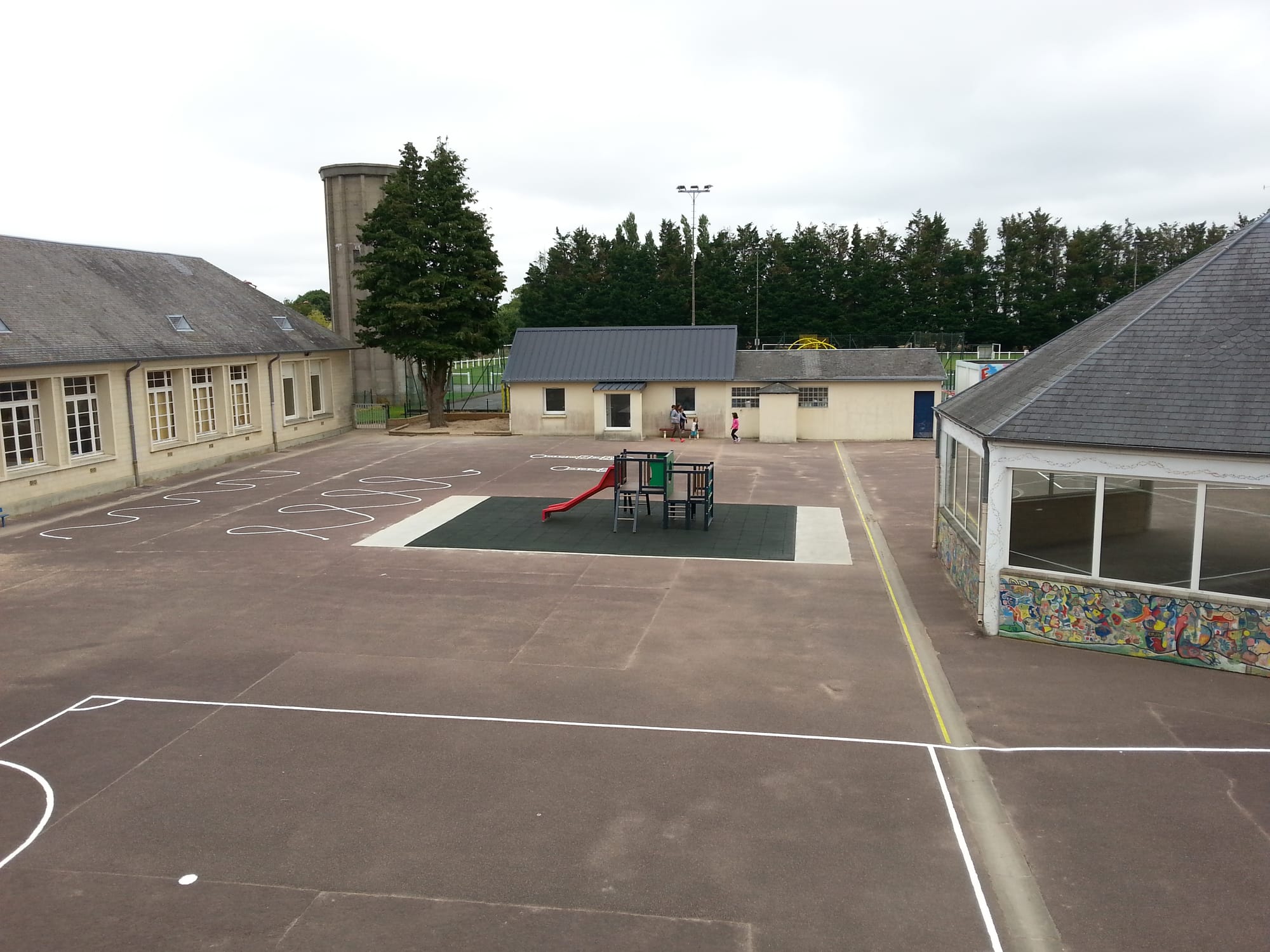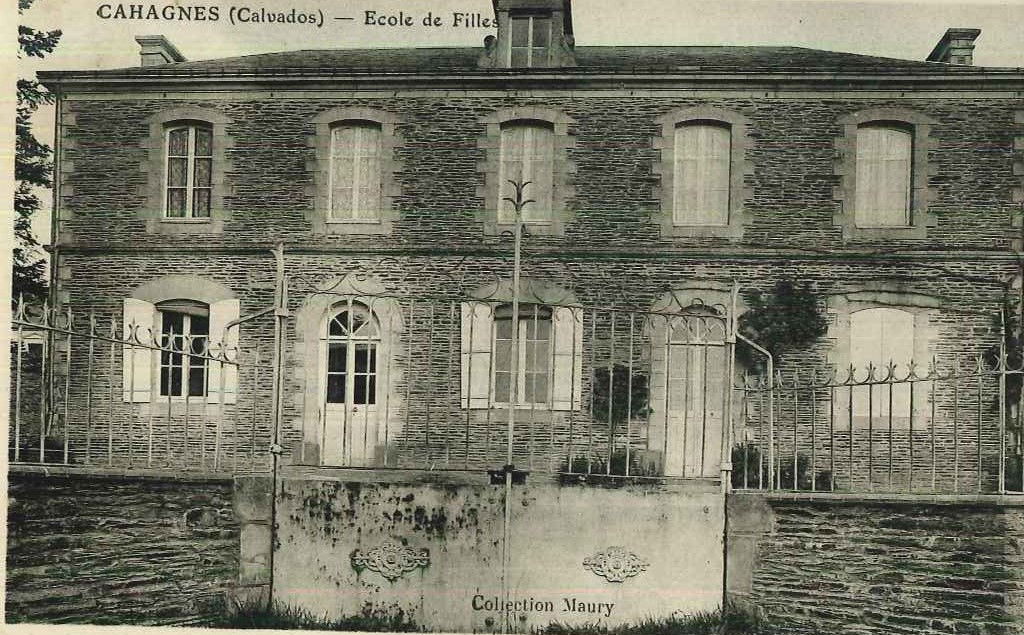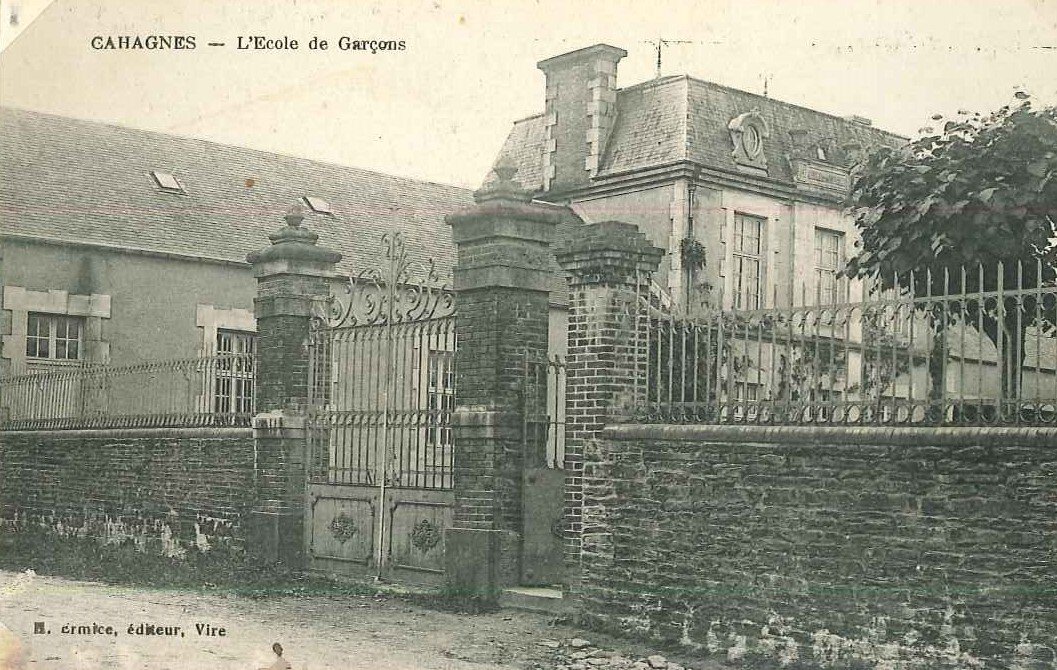2. SCHOOL

It was in 1833 that the Guizot Act legalized private schools and encouraged the development of public schools. Cahagnes built the boys' school, which was completed in 1856. The girls' turn came in 1868. In 1879 the mayor declared 146 students: 83 in the boys' school and 63 in the girls' school.


Over time, the space becomes cramped and requires renovations. The municipality then plans an expansion of the boys' school, but the costs and the decrease of the population postpones the project. In 1883, the same thing happened. The boys' school was too small to accommodate everyone. The school had to refuse 6 children.
Although the girls' school was renovated, in 1888, the project of a new boys' school materialized 200 m from the town, on the road to Caumont. There is an emergency: "Considering that the current school is in a state of obsolescence such that the lives of the students, the teacher and his family are in danger." In 1889, 104 children aged 5 to 12 were likely to attend school.
The project includes housing for two teachers attached to the school, two classrooms that can accommodate 104 students, places of ease, as well as spacious courtyards, a courtyard and a sufficiently extensive garden. The project was carried out by the autumn of 1893.
The teacher Pierre Decaindry marked his passage to Cahagnes since 1881. Free thinker and valiant republican, he opposed the commune, particularly Charles Edeline, mayor and notable rural archetype. Decaindry was also the president of the Calvados teachers' union.
Excerpt from the newspaper La Lanterne, October 6, 1905: "The mayor and the parish priest of Cahagnes, assisted by all the women propagandists of the reaction do not cease to excite the population against the teacher Decaindry."
Following numerous incidents, the municipality decided to create a free school in the premises belonging to the mayor. The municipal council resigned in May 1905. His departure brought calm to the commune.
In 1882 the idea of a children’s school emerged, that is to say for children under 6 years of age.
The boys' school was destroyed in combat in 1944, as was the girls' school, which has since been transformed into a party hall. Wooden structures are made to accommodate the students while waiting for the reconstruction. After 18 months of work on the site of the old boys' school, the new school group was inaugurated on 16 October 1955. It was the occasion of a grand inauguration with thirty personalities and a parade of 160 students from the 5 classes.
A tribute was paid to the teachers of the time: Mlle Desdoit, Mr Pouliquen, Mme Lefèvre and Mlle Sarda.
The newspaper Ouest France recounts the event: "This is one of the most beautiful school groups that can be found in Bocage, combining sober elegance with a harmonious and practical design."
The new school group consists of two symmetrical and similar buildings: a group of 5 classes. A children’s class, 2 girls' classes and 2 boys' classes. All this is accompanied by a large domestic teaching room for girls, a manual work class for boys, a canteen and 4 large functional housing for teachers. This school group is astonished by its modernity: choice of materials (Caen stone), spacious and bright classes, large playground for boys and girls, separated by a fence, suggesting that one day it will be removed.
The press concluded: "The classes are airy and heated and the harmony of the soft colors and the rational elegance of the school furniture could only give positive influences on the young brains."
Agricultural courses were also given to the children of farmers who wanted to stay on the farm. An agricultural establishment was even envisaged but it was finally installed in Vire. The increase in the population since the 1970s has made it possible to maintain classes, and even to create a new one since. The school association with the municipalities of Saint-Pierre-du-Fresne and Les Loges was named Nelson Mandela.
